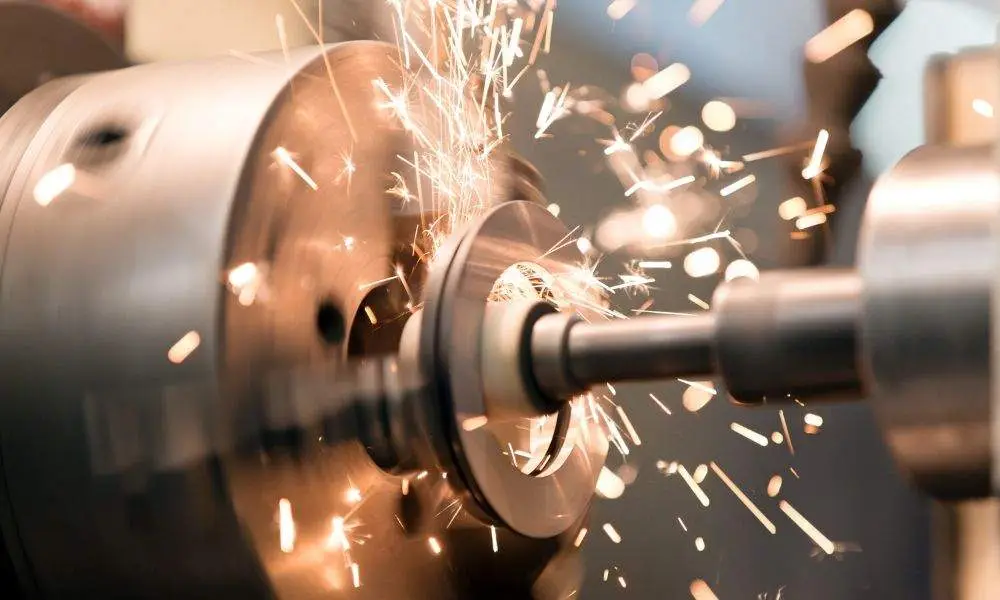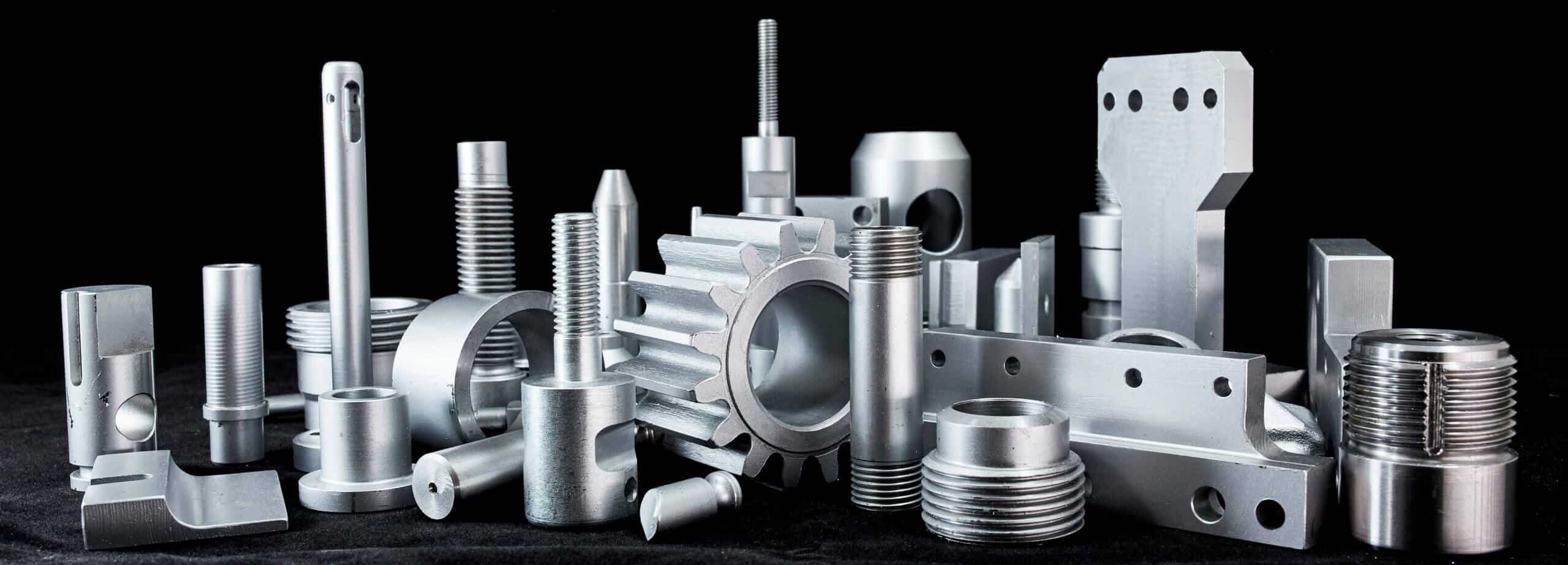Revealing the Details of Bolts and Machining Processes for Ideal Efficiency
In the world of engineering and manufacturing, the choice of bolts and the ins and outs of machining procedures play an essential duty in identifying the best performance and toughness of a product. From the apparently simple task of selecting the best sort of bolt to the complicated precision machining methods used, every action in this procedure demands thorough interest to information. As we start this exploration right into the globe of fasteners and machining, we will certainly discover the refined yet essential variables that can substantially affect the efficiency and quality of the end product, clarifying the commonly ignored aspects that can make all the difference in attaining optimum performance.

Importance of Correct Fastener Selection
Selecting the suitable bolts is vital in ensuring the structural integrity and longevity of any mechanical assembly. Bolts play an essential function in holding parts together safely, with the right choice adding substantially to the total performance and reliability of the assembly. When selecting fasteners, factors such as product compatibility, ecological conditions, load-bearing capability, and ease of installation need to be thoroughly thought about to assure optimum efficiency.
Incorrect bolt selection can cause a series of issues, including helping to loosen, deterioration, and even architectural failure. Making use of bolts that are not suited to the certain requirements of the assembly can compromise its functionality and pose security threats. For that reason, engineers and designers should carefully review the application needs and select bolts that meet or surpass the necessary standards and requirements.
Moreover, the appropriate fastener selection procedure entails evaluating the joint design, anticipated loads, resonance levels, and prospective thermal development or contraction to make sure that the chosen fasteners can hold up against the operating problems successfully. By focusing on appropriate fastener option, suppliers can boost the top quality, longevity, and efficiency of their mechanical assemblies.
Kinds and Attributes of Bolts
A crucial facet of mechanical assemblies lies in recognizing the diverse types and special characteristics of bolts made use of in various industrial applications. Fasteners are crucial components that hold frameworks together, making certain security and capability.
Screws are threaded bolts that are typically utilized to sign up with two or more parts together. Nuts are inside threaded bolts that mate with bolts to hold elements with each other. Washers are slim plates that disperse the lots of a fastener, avoiding damages to the product being secured.
Comprehending the attributes of each kind of fastener is crucial for choosing the appropriate one for a particular application, guaranteeing optimum efficiency and integrity of the mechanical setting up. Fasteners and Machining.
Precision Machining Methods for Efficiency
The complex layout requirements of different fasteners demand utilizing accuracy machining strategies for ideal performance in producing processes. Precision machining is important in making sure that fasteners meet the specific requirements required for their designated application. One of the key strategies made use of in precision machining is Computer Numerical Control (CNC) machining, which allows high levels of accuracy and repeatability in the manufacturing of fasteners. CNC equipments are capable of executing complicated cuts and forming procedures with minimal human treatment, resulting in increased performance and uniformity in the manufacturing process.
Along with CNC machining, various other precision methods such as grinding, milling, and transforming are typically used to accomplish the limited tolerances required for fasteners. These techniques enable suppliers to develop fasteners with smooth surfaces, accurate dimensions, and high structural stability. By utilizing precision machining techniques, suppliers can improve the top quality of bolts, minimize material waste, and enhance total manufacturing performance. The use of sophisticated machining processes aids make sure that fasteners satisfy sector criteria and consumer assumptions for performance and dependability.

Variables Influencing Machining Refine Efficiency
Numerous variables play a considerable function in figuring out the performance of machining processes in the production of fasteners. The very first vital variable is the selection of reducing devices. Selecting the look here suitable devices based on the material being machined, wanted coating, and cutting rates can considerably affect the performance and high quality of the machining process. Furthermore, the cutting specifications such as reducing speed, feed price, and depth of cut are essential variables that affect performance. Fasteners and Machining. Maximizing these criteria based on the details needs of the fastener being generated is essential to accomplishing economical and accurate machining.
Maker rigidness and security likewise play a crucial function in establishing machining process performance. An experienced operator can make real-time adjustments, troubleshoot problems efficiently, and make sure that the machining procedure runs efficiently, inevitably influencing the final high quality of the bolt.

Quality Assurance Steps in Manufacturing
Variables affecting machining process efficiency, such as cutting device selection and device stability, straight influence the execution of high quality control procedures in production. Quality control steps are important in making certain that products satisfy the needed requirements and standards. In the production process, numerous strategies are utilized to keep quality standards. Examination and screening play a vital role in identifying any kind of variances from the wanted advice end result. Regular maintenance of machining equipment is also crucial to copyright top quality control. Calibration of makers and devices is essential to make sure accurate and precise manufacturing processes. Furthermore, implementing standard operating treatments and protocols can help in preserving consistency and high quality throughout the production line. Quality assurance measures not only concentrate on the end item but additionally on every stage of the manufacturing procedure to protect against errors and issues. By sticking to rigorous top quality control measures, makers can boost client fulfillment, develop a reputation for dependability, and eventually attain optimal efficiency in their machining procedures.
Verdict
Finally, selecting the best fasteners and utilizing precision machining techniques are essential for optimal efficiency in producing procedures. Understanding the kinds and qualities of bolts, in addition to factors influencing machining process performance, can lead to enhanced efficiency and top quality control steps. By taking notice of these complexities, makers can attain higher degrees of performance and dependability in their items.
In the world of design and production, the option of fasteners and the complexities of machining procedures play a critical role in establishing the best efficiency and longevity of an item (Fasteners and Machining). One of the main techniques made use of in precision machining is Computer system Numerical Control (CNC) machining, which allows high degrees of precision and repeatability in the production of bolts. The use of innovative site machining processes helps guarantee that bolts meet sector standards and customer assumptions for performance and reliability
In final thought, selecting the ideal bolts and utilizing accuracy machining strategies are crucial for ideal performance in producing processes. Understanding the types and characteristics of bolts, along with aspects influencing machining process efficiency, can lead to boosted efficiency and high quality control steps.